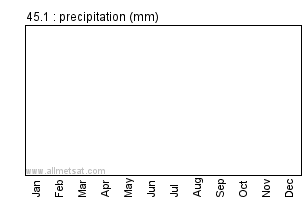Tokyo, a sprawling metropolis often likened to a vibrant kaleidoscope, presents a climate that is as multifaceted as its urban landscape. Nestled on the eastern coast of Honshu, this bustling city experiences a unique convergence of influences, resulting in an intriguing tapestry of weather patterns. The climate here is categorized as humid subtropical, which implies not only a warm embrace in summer but also a notable chill in winter. However, it is the juxtaposition of urban heat and seasonal variability that makes Tokyo’s climate particularly captivating.
The annual temperature in Tokyo can feel like a roller-coaster ride. Summers, stretching from June to September, may be characterized by a sweltering embrace, with temperatures often soaring above 30 degrees Celsius (86 degrees Fahrenheit). The oppressive humidity during this period can be likened to a heavy blanket, enveloping the city in an almost palpable haze. The air is stifling, pregnant with moisture, making even the simplest outdoor activities require considerable fortitude.
However, beneath this sweltering exterior lies Tokyo’s enchanting seasonal allure. Autumn, a transitional marvel, stages a mesmerizing spectacle as the city dons an autumnal cloak of red and gold. From October to November, temperatures begin their gentle descent, offering a refreshing reprieve. The warmth lingers longer in the form of mild afternoons that invite residents to explore sprawling parks and gardens, turning every footstep into a celebration of nature’s artistry.
Winter in Tokyo, stretching from December through February, paints a stark contrast to the summer’s fervor. Though not as severe as in some northern climes, the chill descends like a whisper, with temperatures dipping to around 5 degrees Celsius (41 degrees Fahrenheit) on occasion. Frost-kissed mornings may prompt residents to wrap themselves in layers, embodying both fashion and function. The city’s winter is a quieter affair; the vibrant energy of summer melts into the serenity of snow-dusted temples, offering a different kind of beauty. It’s a peaceful, reflective time, perfect for the contemplation of both nature and self.
Spring, that capricious harbinger of renewal, arrives in a flurry of cherry blossoms and fleeting warm days. From March to May, the cherry blossoms bloom in a riot of pinks and whites, captivating the hearts of both locals and tourists alike. As winter recedes, the temperatures begin to dance upwards, generally ranging from 10 to 20 degrees Celsius (50 to 68 degrees Fahrenheit). The delicate fragrance of blossoms fills the air, and parks transform into sprawling canvases of color, inviting picnics and hanami parties beneath the blooms. This season carries an air of optimism, embodying the idea that life, much like the flowers, can flourish after even the harshest of winters.
Yet, amid this seasonal enchantment lies another phenomenon—the urban heat island effect. Tokyo’s concrete jungle, with its towering skyscrapers and bustling streets, amplifies temperatures, creating an oasis of heat that lingers long after the sun sets. The extensive asphalt and steel absorb and retain heat during the day, radiating warmth into the night. During the summer months, this creates a scenario where nominal temperatures can seem the same, but the reality for residents is quite different. At times, urban areas can be several degrees warmer than surrounding rural environments. This disparity paints not just a picture of discomfort but also poses significant health risks, especially for vulnerable populations such as the elderly.
To compound the issue, the climate in Tokyo is not static; it is undergoing rapid changes, influenced significantly by climate change. Historical weather records suggest a trend towards warmer temperatures over recent decades. This shift heralds a new era where traditional weather patterns are unpredictably altered, leading to what some may call “seasonal surprises.” The blooming of cherry blossoms may now arrive weeks earlier than in the past, and the once-timely arrival of winter’s chill can sporadically shift, leaving society grappling with the unpredictable nature of their climate.
The implications of these changes extend beyond mere discomfort. The urban heat island effect intensifies not only heat-related illnesses but also exacerbates energy demand. Cities facing elevated temperature levels often experience higher electricity usage due to increased air conditioning. This relentless demand places a considerable strain on energy resources, forcing cities like Tokyo to assess their sustainability measures actively. Tokyo’s residents, ever-adaptive, are increasingly turning to innovative solutions, including urban greening initiatives and the installation of cool roofs, to mitigate some of the heat island effects.
Yet, amid these challenges, there remains a striking resilience and tireless spirit among Tokyoites. The city’s commitment to sustainability is burgeoning, with initiatives focused on reducing carbon footprints and enhancing energy efficiency. Local movements are amplifying awareness and inspiring collective actions towards a greener future, fostering community bonds that transcend seasons. The transformation of rooftops into gardens and the repurposing of public spaces into green havens are just a few reflections of that enduring resilience.
In conclusion, the climate in Tokyo, Japan, represents not just a statistical average of temperatures but a rich tableau of poignant transitions and urban adaptations. This vibrant city, marked by its urban heat challenges and captivating seasonal surprises, stands as a testament to both the beauty and complexity of urban climates in a rapidly changing world. Tokyo invites individuals to acknowledge the intricate interplay of nature and urban existence, encouraging a deeper respect for the environment that sustains it. The warmth of summer, the chill of winter, and everything in between serve as reminders that climate is more than a backdrop; it is a dynamic force that shapes life itself.








